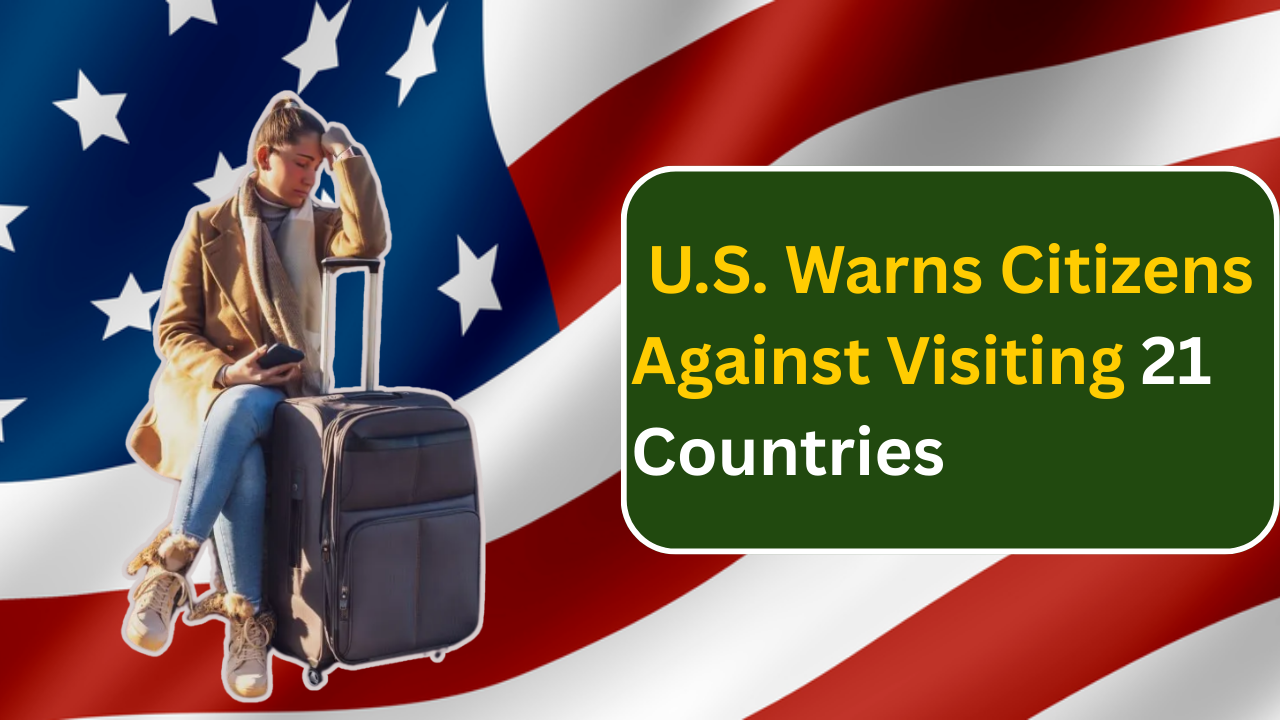The U.S. government has issued a fresh warning for travelers planning international trips this summer, and it’s something you don’t want to overlook. With summer around the corner, many people are excited to book overseas vacations and explore new places, but safety should always come first.
The United States Department of State has a system in place called the Travel Advisories database, which is designed to keep Americans informed about the risks of traveling to various countries around the world. This system helps you understand how risky or safe it might be to visit a specific country, and it updates regularly as situations change.
The travel advisory system is divided into four levels, each showing a different level of risk. The first one is Level 1, which tells travelers to exercise normal precautions. This is the safest category, where there are no major risks or threats, but the government still reminds travelers to be cautious and stay aware of their surroundings. Countries like Japan, Bermuda, and the Cayman Islands are in this category. These are popular tourist spots where most visits go smoothly, but it’s still important to be smart about your safety.
Then there’s Level 2, which means you should exercise increased caution. In this category, there may not be any immediate or specific danger, but there are higher levels of crime, occasional civil unrest, or other risks that travelers need to be aware of. Countries like Saudi Arabia, China, and Spain fall under this category. The goal here isn’t to stop you from traveling but to make sure you’re extra careful if you decide to go. Being aware of your surroundings and keeping an eye on local news can help you stay safe in these places.
Level 3 is more serious. It tells travelers to reconsider travel. This means there are significant risks, like high crime rates, political unrest, or terrorism threats, that could put travelers in danger. Countries like Chad, Niger, Egypt, Jamaica, and Colombia are on this list. While it’s not a complete ban, the government advises people to think twice and strongly consider whether traveling to these countries is really worth the risk. People who still choose to go are urged to take extra precautions and have a solid safety plan in place.
Finally, the most serious category is Level 4. This is a clear warning: do not travel. Countries in this group are considered extremely dangerous due to reasons like active armed conflict, terrorism, violent crime, or situations where foreigners might be targeted. The U.S. government strongly advises its citizens to completely avoid traveling to these countries because the risks are just too high. Right now, 21 countries are listed under the Level 4 “Do Not Travel” advisory.
These include Afghanistan, Belarus, Burkina Faso, the Central African Republic, the Democratic Republic of the Congo, Haiti, Iran, Iraq, Lebanon, Libya, Mali, North Korea, Russia, Somalia, South Sudan, Sudan, Syria, Ukraine, Venezuela, Yemen, and Burma (also known as Myanmar). Each of these countries is facing serious issues like war, political instability, or widespread violence, making it unsafe for travelers.

Mexico is another country where the U.S. has issued specific travel warnings, though the entire country is not under the highest alert. Certain states in Mexico have been labeled as too dangerous to visit. These include Colima, Guerrero, Michoacán, Sinaloa, Tamaulipas, and Zacatecas.
The main concerns in these areas are crime and kidnapping, and the risks are high enough that travelers are told not to visit these regions at all. So, if you’re planning a trip to Mexico, it’s very important to check which areas are considered safe and avoid the ones with serious warnings.
Gaza is another area that travelers are being warned to stay away from. The ongoing armed conflict there makes it extremely unsafe, and the U.S. government has made it clear that travel to Gaza should be avoided completely.
These travel advisories are not issued lightly. They are based on up-to-date intelligence and information from experts who monitor global events. When a country is put on the “Do Not Travel” list, it means that the risks are so serious that even well-prepared and experienced travelers would be in danger. In many of these places, the U.S. embassy’s ability to assist in an emergency is also limited, which adds to the risks.
If you are planning a trip overseas, it’s a good idea to check the U.S. State Department’s website before you finalize any bookings. The site has real-time updates and detailed explanations about why each country has its current travel advisory level. For those who want extra safety, enrolling in the Smart Traveler Enrollment Program (STEP) is also recommended. This free service lets you register your travel plans with the nearest U.S. embassy or consulate, so they can contact you in case of an emergency and send you important safety updates.
International travel can be a wonderful and eye-opening experience, but it’s important to be smart and stay informed. With so much happening in the world, conditions in many countries can change quickly. A destination that seemed fine a few months ago can become dangerous overnight due to things like political upheaval, natural disasters, or a rise in violent crime. That’s why staying updated on travel advisories is a key part of planning any international trip.
In summary, while the world offers countless beautiful and exciting places to visit, safety must always come first. The U.S. has placed 21 countries on its strictest “Do Not Travel” list, along with several specific areas like parts of Mexico and Gaza.
These warnings are there to protect travelers and ensure that your trip is memorable for the right reasons. Always double-check the latest travel advisories and think carefully about the risks before you pack your bags. It’s better to be cautious now than to face unexpected dangers later. Safe travels start with smart planning.

Deepak Grover is a dedicated content writer at OTE News, specializing in government affairs, public policy, and current events. With a keen eye for detail and a passion for factual reporting, he ensures readers receive accurate and insightful news. Deepak holds a degree in Political Science and has experience in research-driven journalism.
When not writing, he enjoys reading historical books, exploring hiking trails, and staying updated with global political trends. His commitment to ethical journalism makes him a trusted voice at OTE News.




